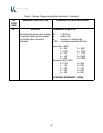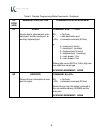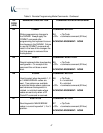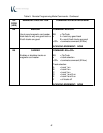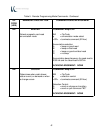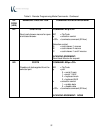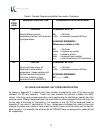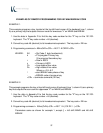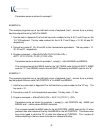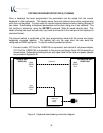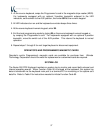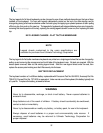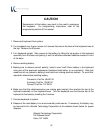
53
EXAMPLES OF REMOTE PROGRAMMING FOR KEY MAKE/BREAK CODE
EXAMPLE 1.
This example programs a key located at the top left-hand corner of the keyboard (row 1, column
A) as a primary key that outputs the scan code for lowercase "z" on MAKE and BREAK.
1. Use the data in Appendix D to find the key code number for the "Z" key on the 101/102-
keyboard. The "Z" key code number = 46 (decimal).
2. Convert key code 46 (decimal) to its hexadecimal equivalent. The key code = 2E hex.
3. Programming command = A0krcCxDx<CR> = A0 P 1 A CED2!-<CR>
WHERE: A0 = Op Code (1 byte hexidecimal)
k = P to program Primary key
S to program Secondary key
r = Row in ASCII
c = Column in ASCII
Cx = Low nibble of hex value
Dx = High nibble of hex value
Where x = 0-9, A-F
! = start BREAK code phase of key
- = BREAK code of previous key
<CR> = terminate command (0D hex)
EXAMPLE 2.
This example programs the key at top left-hand corner of keyboard (row 1, column A) as a primary
key that outputs the scan code for uppercase "Z" on MAKE and BREAK.
1. Use the data in Appendix D to find the key code number for the "Z" key on the 101/102-
keyboard. The "Z" key code number = 46 (decimal).
2. Convert key code 46 (decimal) to its hexadecimal equivalent. The key code = 2E hex.
3. Programming command = A0krc(CxDx)<CR> = A0 P 1 A ( CE D2 ! - ) <CR>
Parameters same as shown for example 1, except () = left shift MAKE and left shift
BREAK



